#Cultural commentary in fashion
Explore tagged Tumblr posts
Text
The Intersection of Fashion and Socio-Political Commentary: Exploring the Impact of Clothing as a Form of Protest and Expression
The Intersection of Fashion and Socio-Political Commentary: Exploring the Impact of Clothing as a Form of Protest and Expression #FashionActivism #ClothingProtest #SocialJusticeFashion #CulturalCommentary #FashionForChange
Fashion Activism: The Power of Clothing in Socio-Political Commentary In recent years, fashion has transcended its traditional role as mere clothing and evolved into a powerful tool for socio-political commentary. From runway shows to streetwear, designers and individuals alike are utilizing fashion as a platform to express their views, challenge societal norms, and advocate for change. This…

View On WordPress
#Clothing as protest#Cultural commentary in fashion#Fashion activism#Fashion and activism#Social Justice & Fashion
0 notes
Text
The issues (and non-issues) of bimbocore
This little discussion is coming off the back of a thought (rant) I shared on another blog a few weeks ago, largely where reinvented bimbo started compared to where it is now and why is everyone blaming Chrissy Chlapecka?
the resurgence of the 'bimbo' aesthetic in the early 2020s embarked as a movement of reclamation, a way to assert that there was actually nothing demeaning about a barbie-esque appearance and to remove the power from stereotypes used against us, essentially centring the Bimbo in a queer, left-wing ideology.
If you were to ask a modern Bimbo why hot pink? Why bedazzled? Why perform this exaggerated caricature of femininity? You might end up in a seemingly unrelated discussion about the modern Western political landscape. Bimbo culture has essentially emerged upon the heels of the controversies surrounding feminine experiences and bodily autonomy across the United States- women feeling that they are being confined to a specific performance of femininity, that the government is regulating their femininity, may tell you that the idea of bimbo culture is a satirical backlash to the ideas of what a modern Western woman should be and what she is expected to be. She is nothing more than a doll to the culture that surrounds her and her response is to take what is expected of her and make it a performance a juxtaposition of what she is expected to be and what she is and make them hate her for the femininity she is presenting. And thats exactly what Lauren Pantin said in her short update newsletter - ' If you’re going to punish me for being a woman anyway, I’m going to be the silliest, brattiest, potty-mouthed no-no of a woman you’ve ever seen. I’ll be the dumbest bitch on earth! Where’s my crown!"
Ask another bimbo and she'll tell you that her bimboism stems from the movement to satirise consumerist culture and misogyny, aiming to remove the stigmas around hyper-femininity. Essentially, allowing women to empower themselves through their femininity (rather than the popular idea of in spite of their femininity cough cough inlog cough) and giving women ownership over their sexuality and their body in ways that actively combat the misogynistic standards held against them- oftentimes gearing it towards queer people. It's a new-wave feminist movement designed to avert the male gaze through women appearing as these caricatures of traditional femininity whilst emphasising their own dominance and independence as support for women's right movements.
So it's a kind of sartorial rebellion against oppressive politics and culture? Well, it was at first. And to many it still is, however, as with all trends rooted in a sartorial culture the meaning tends to get lost in the shares and reposts as it expands across social media. Those who just happen across the culture or see nothing but images of it scattered across the internet arent likely to understand that this aesthetic is also a political performance, it will become a bimbo resurgence!... but not effectively hold the same weight and meaning that the movement was intended to hold.
One way to look at this is the trend of " girl [activity]" . Trends like girl maths, girl dinner, explaining things to the girlies. Now let me get it straight theres nothing wrong in finding a little fun in these trends- girl dinner was cute, as someone who loves cooking I loved seeing what everyone was making for their dinner until it got overrun by the 'I only had iced coffee today' brigade. Sometimes I'll see a girl maths video about how if I pay in cash its basically free since the number on my bank account didn't change and I laugh because thats logic I have applied to purchases before. There's little funny things and behaviours that people will have in common, and they're being labelled as 'girl [blank]' because it is predominantly groups of women discussing them and finding a little fun in it. But again, as trends reach a wider audience their initial intention becomes lost along the way and generalisations start to set in. TV shows and radio hosts have entire segments explaining girl maths, it has become cute and quirky to explain political landscapes in terms of shopping and makeup, and bimbo culture has become less of a satirical performance and instead commonly assumed as a Karen Smith- esque personality reminiscent of the 'dumb blondes' of the early 2000s.
Removing this sartorial protest from its context can be seem as damaging, especially in the way that social media currently presents aesthetics surrounding sexuality to young people. As bimbo culture reaches a wider audience it's likely to fall into the hands of young people who are, let's face it, not going to care about the deeper meaning. Young people are likely to see celebrities, tiktok personalities, attractive people in general donning their hot pink promiscuous outfits and feel inclined to join in on what is presented to them as nothing more than the newest fashion trend.
One of the key movements of bimboisim is to embrace feminine sexuality and overcome the stigmas about women expressing their sex and sexuality and sartorially this is represented by the micro mini skirt and the skimpy shirt. Society has had no difficulty pushing teenage girls to grow up rather quickly by presenting them with teen magazines in the y2k era talking about how to get a bigger bust or butt, social media promoting the attractive body type the attractive face the attractive makeup the attractive style of clothing that will settle their pubescent insecurities and validate them in the eyes of a society run by men. Young women are ridiculed for their bodies not being developed enough at 15, for not being sexually active at 16, must have lived the life experiences of drugs and alcohol and sex and heartbreak at 17 and are then turned into high school girl fucks random guy porn at 18. Removed-bimboism has become part of the problem in which young girls not only feel the need to dress promiscuously and express a sexuality that they still haven't fully explored in order to feel validated as an active part of society but also have to present themselves as stupid in order to seem funny cute and quirky. The idea that women are only able to understand complex theories if they are presented in terms of fashion and shopping and makeup is a stereotype enforced by tv and movie comedy that women have worked endlessly to overcome, and the reclamation of bimbo culture should not actively counteract the progress of feminist activity. You don't have to be smart to be a modern bimbo by any means, in terms of intelligence the movement is centred around a more relaxed approach to success that counters the ideology of the girl boss movement- you don't HAVE to be a huge success or overwork yourself to hell and back to validate who you are as a woman.
Modern bimboism set out with the comfort of knowing there is no pressure to understand everything, you might need something explained in your own terms, you might just be a little fucking stupid sometimes but there is no active harm in not always understanding. That, however, has been twisted through these trends discussed prior to make it seem like all bimbos (and by misogynistic extension, all women) are just not as smart as men. Which, as we know, is likely to be emulated by young people as it reaches a wider audience.
So it's understandable why there is concern over bimboism. But at what point does critique of bimboism begin to drift into the right wing? Blaming women who dress provocatively simply for being women who dress provocatively is not the answer, in my opinion, to the issues with the bimbo culture. There is (to the chagrin of many) nothing wrong with an adult women expressing the ownership of the sexuality that she was granted the right to express through the liberation of women, sex and queerness.
Tensions have been rising within more radical groups, or groups who are of the tendency to reject feminine presentation in regard to what they perceive as an active threat to the reputation of women. There has been a desire expressed across social media sites by these women that 'all women' should refrain from direct expressions of femininity and reject all social norms expected of women under the assertion that it 'makes us all look bad'. There is a lot to be said about the ways in which misogyny utilises stereotypes and generalisations of what is considered 'feminine behaviour' to degrade women, however, it is highly pretentious and internally misogynistic a notion that the very idea of feminine expression is to be at fault. The ideology begins to attack individual women, expressing that their online content is to blame for the ways in which men treat women, or that children have become so oversexualised.
In a way this reflects the puritan standards of online censorship frequently weaponised by the right wing in order to oppress further marginalised groups. 'Think of the Children' has been used time and time again as a way to bastardise protests of queerness, of sexual liberation of racial equity and it is being weaponised now again just as it was across the 70s against women who dare to be 'immodest' . It goes without saying that people who create content online are not responsible for the actions of teenagers who in the midst of discovering their sexuality, may seek out more mature content- not just for sexual gratification, but a newfound interest into how adults express their sexuality as a way to help them navigate expression themselves. To place limits on how women are allowed to dress or express sexuality is to revert to the ideas of puritanism that existed prior to the (well, partial) liberation of the marginalised people.
Is bimbo culture perfect? No, it's been washed out as a mimicry of early 2000s internalised misogyny. Is it worth hating on random women? No, there issue is more centred to how misgyny is so deeply rooted in our society that we are happier to blame women for the stereotypes forced upon them than to actually comment on how society cultivates these ideas.
#bimbo culture#bimbocore#fashion commentary#fashion blog#fashion style#tiktok trend#fashion analysis
43 notes
·
View notes
Text

“Just wait until he finds out that there are people who wear more than two layers of clothing at once….”
#m; hati#ic; to eternity#dash commentary#crack#the idea of someone learning about ‘clothing culture’ is funny to me#also the insanity of fashion and the many far ways it can swing
4 notes
·
View notes
Text
Subscribe 2 my substack 💕
Going to write about a lot of different things but mainly cultural commentary, fashion, music, and life's lil moments
0 notes
Text
Meanwhile in Japan, there's a scene in a drama that is definitely commentary on communication in which they debate how to handle squeezing lemon on a serving platter of chicken. It goes something like:
Person A: wait you shouldn't just squeeze lemon on the chicken! Not everyone likes lemon on chicken
Person B: what? Everyone likes it
Person C: no A is right, not everyone does and you shouldn't assume
Person D: then just ask - does everyone like lemon on chicken?
Person C: no you can't ask, because then it puts ppl on the spot and they might feel like they have to hold back from saying no
Person B: so what the heck am I supposed to do???
*person A and C decide to act out what they think is proper procedure. They don't know each other well and don't use any words to communicate what they think is best, they just go straight to acting it out*
Person A: oh, I see there is lemon
Person C: you're right, there is lemon.
*both turn towards person B, concluding the "demonstration"*
I've been thinking about the "it's not that autistic people don't know how to communicate, it's that we communicate differently" statement. True. Very true. 100% agreed. Absolutely and totally valid. But, hear me out: communication is also highly culture dependent.
In the USA, my being direct, literal, honest, frank, answering what I'm asked, and speaking what I'm thinking, is often considered "rude" and "mean". In Germany, it's neutral, appropriate even. In China, I'm being nice because I'm not actually insulting anyone.
Example: "Does this dress make me look fat" when it actually does.
USA: "Of course not! You look great!"
Germany: "Yes."
China: "It makes your ass look as big as the Yellow River."
Another example: "How are you?"
USA: "I'm very well, thank you!"
Germany: "I have diarrhea."
China: "I need to go shit my brains out for the eighth time, you idiot, go away."
#communication#culture#日系人#im not autistic to my knowledge but i tend to be literal so this kind of thing can be v confusing#this a bit of an exaggeration bc it was social commentary and is a bit old fashioned but its still relevant#日本#i tend to be polite with ppl by default because i never know when to use or not use polite behavior#except with my oldest of friends my partner and my parents
99 notes
·
View notes
Text
We're Addicted To Jamie Nelson
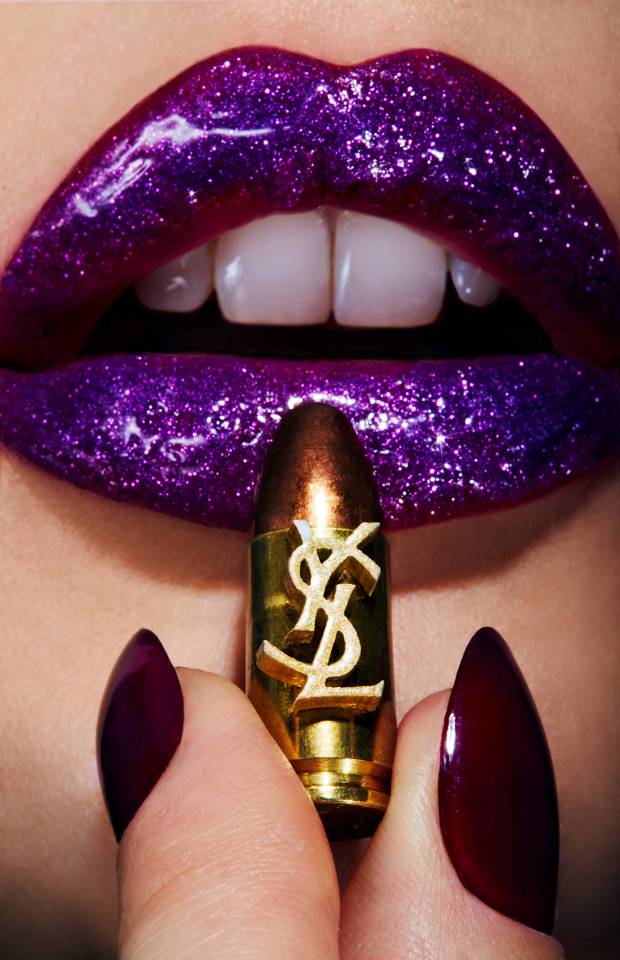
YSL (Yves Saint Laurent), Bullet, 2017
✨ COMING SOON ✨
We’re thrilled to announce a new and exciting addition to the Addicted family: the incredibly talented rollerskating, living the dream in a house that would make Barbie pink with envy - photographer, Jamie Nelson. With her unique perspective, artistic flair and unparalleled ability to capture the essence of her subjects, Jamie brings a fresh and captivating energy to our gallery. Did we mention the (very real) flamingos lounging poolside?
Read more...
#Jamie Nelson Photographer#photography#pop culture#pop art#contemporary art#fashion#luxury#social commentary#storytelling#artgallery#online art gallery#buy art#art collecting#art collection#art collectors#limited editiion#Get Your Art Fix
0 notes
Text
Most of us begin the Autism unmasking process looking for greater self-acceptance, but don’t realize what a messy, uncertain, weakened, traumatized, resentful version of ourselves we’re going to have to accept. Secretly, we hope that the unmasked version of us will be just as capable and comfortable as we always pretended to be — but also much happier, and more authentic.
The great challenge of unmasking, then, is letting go of all pre-conceived notions of the type of person we must be, so that we can simply exist in the moment, feeling whatever we feel and needing whatever we need.
It can take many years for a person to reach this point. I’ve also noticed there are common phases that Autistics move through as we go about unmasking — periods of questioning, self-loathing, anger, withdrawal, exploration, relief, and obsessive self-consciousness, just to name a few.
Not all of these phases appear for everyone, of course and they do not necessarily come in a specific order. Rather than viewing them as stages that progress in a linear fashion, we can see them instead as common psychological defenses that emerge when a person is having a hard time reconciling their disability with their beliefs about who they should be.
Important internal work is happening when a person seems to be “caught” in any particular phase. Some phases are needed corrections for society’s anti-disability stigma — such as the phase where a person believes that Autism makes them inherently superior to allistics. Others are corrections for those corrections, a hypothesis and antithesis that gradually resolve into a synthesis within the disabled person’s life.
These phases don’t last forever, and we learn something important each time that we pass through them. Like the phases of the moon, these phases may recur in our lives in an almost cyclical fashion, bringing us closer to accepting the truth of ourselves each time. Remember as you read through this list of phases that arriving at a final state of “recovery” is not the goal. When we unmask, we’re not trying to get rid of our disability, after all — we’re just hoping to understand and accept all that is inside us a bit better.
And so, to help you prepare for your unmasking journey, here are some of the common phases of unmasking:
Questioning
It’s incredibly common for a masked Autistic person to spend months or even years questioning whether they actually are disabled, or have the “right” to openly identify as such. Even after a person has researched Autism at length, sought external input from loved ones and a therapist, and integrated themselves deeply within the neurodivergent community, they may be struck with regular bouts of uncertainty.
We can blame this on a society that investigates every single claim of disability repeatedly for evidence of fraud, and a culture where disabled people are accused of being delusional, manipulative attention-seekers.
Obsessing (About Autism)
One way that questioning Autistics try to resolve their uncertainty is by consuming every piece of information and commentary about Autism that they could possibly find. Autism often becomes one of our special interests, early in our unmasking — making us see Autism between the pages of every book, and on the confused face of every stranger.
When a person is obsessing about Autism, they may reference their disability as an explanation for every single behavior they or anyone else ever exhibits. Tying your shoes in the “bunny-goes-round-the-tree” style is an Autism thing. Liking the small spoon is an Autism thing. That rude comment I just made about your appearance is an Autism thing, and so you cannot criticize me for it, because that’s a core part of my being I can’t change. Every person in the obsessed Autistic person’s life may be assigned disability labels: he’s got ADHD, she’s a PDAer, your dad’s undiagnosed Autism is the reason he stands in the middle of the room watching TV.
Obsessing (About the Self)
Unmasking requires a high degree of curiosity about the self. A person can’t even notice there’s a disjoint between their authentic feelings and how they present themselves to others unless they look within. Unfortunately, doing so means constantly asking ourselves whether our actions reflect our true selves, and what our “true self” even is — and thinking too much about these questions can make the mind loop back on itself infinitely.
When I first started unmasking, I could not stop assessing how I carried my own body. I knew that my posture was “bad,” in neurotypical terms, but was that because I had muscle underdevelopment caused by Autism, or because I was always trying to make myself inobtrusive and small? Would it be “unmasking” for me to stand straight and claim more space — or would that be me masking even worse, by imitating neurotypical confidence?
Autism Supremacy
Though many unmasking Autistics experience a big drop in self-esteem, it’s equally as common for us to take immense pride in our neurotype, even to an excessive degree. During the Autism supremacy phase of unmasking, Autistic people may feel that their disability actually makes them more moral, logical, emotionally attuned, intelligent, or compassionate than others.
“Autistic people do have empathy! In fact, we have more empathy than anyone else!” You may hear an Autism supremacist declare proudly, pushing back against the stereotype of us as “anti-social” monsters. But the argument that some of us actually experience hyper-empathy, while true, does nothing to challenge the ableism of equating a person’s emotional sensitivity with their humanity.
I wrote about the many phases that unmasking Autistics tend to pass through, and the various needs those phases exist to meet. You can read the full piece (or have it narrated to you by the Substack app) for FREE at drdevonprice.substack.com
155 notes
·
View notes
Note
i also see thistle as being young, but another reason as to why he's okay with earmuffs could be because he knows practically nothing about elven dress and culture, given that he was raised in tall-man lands (plus he's been dressing as a jester for the majority of his life so i imagine he's either not picky about his appearance or is a fan of decorative dress). who knows really though, just an interesting thought!
I think the little commentary is more how they are perceived? Marcille is more okay with hers than thistle. But yeah he's a little jester guy that uses shoe pants you cant expect him to be in fashion.

247 notes
·
View notes
Text
The Philosophy of Punk
The philosophy of punk is a distinctive blend of cultural rebellion, DIY ethos, and anti-establishment attitudes. Emerging from the punk rock music scene in the 1970s, punk philosophy has since evolved into a broader subcultural movement that encompasses music, fashion, art, and social commentary. Here's an exploration of the core tenets and influences of punk philosophy:
1. DIY Ethic
At the heart of punk philosophy is the "Do It Yourself" (DIY) ethic. Punk advocates self-sufficiency and creativity without reliance on mainstream institutions or commercial interests. This ethos encourages individuals to create their own music, art, and fashion, often using limited resources. It fosters a sense of empowerment and community, as punks produce and distribute their own records, zines, and merchandise.
2. Anti-Establishment and Rebellion
Punk philosophy is deeply rooted in anti-establishment sentiments. It rejects conventional norms, authority, and societal expectations. Punk often criticizes political systems, corporate greed, and social inequalities. This rebellious stance is reflected in the raw and confrontational style of punk music and the provocative nature of punk fashion, which frequently includes ripped clothing, bold hairstyles, and symbolic accessories like safety pins and leather jackets.
3. Individualism and Authenticity
Punk values individualism and authenticity, championing the idea of being true to oneself. It opposes conformity and encourages people to express their unique identities and beliefs. This focus on personal authenticity often translates into a rejection of polished, commercialized aesthetics in favor of raw, unfiltered expression.
4. Anarchy and Libertarianism
Many punk subcultures are influenced by anarchist and libertarian ideologies. Punk philosophy often promotes the idea of a society without hierarchical structures or authoritarian control. Anarcho-punk, a subgenre of punk, explicitly incorporates anarchist principles, advocating for direct action, mutual aid, and community-based alternatives to state power.
5. Social and Political Activism
Punk philosophy is not only about music and fashion but also about activism and social change. Punk bands and communities frequently address issues such as anti-racism, gender equality, LGBTQ+ rights, and environmentalism. Punk's activist spirit is evident in its support for grassroots movements, protests, and various forms of direct action.
6. Cultural Innovation and Subversion
Punk is known for its cultural innovation and subversion. It challenges mainstream cultural standards and pushes the boundaries of artistic expression. Punk art, music, and literature often employ satire, irony, and shock value to critique societal norms and provoke thought.
The philosophy of punk is a multifaceted and dynamic ideology that encompasses a wide range of attitudes and practices. At its core, punk is about rejecting conformity, embracing individuality, and striving for authenticity. It promotes a DIY ethic, challenges authority, and seeks to create a more just and equitable society through activism and direct action. Punk's enduring influence can be seen in various cultural and social movements, making it a vital and vibrant part of contemporary philosophy and culture.
#philosophy#epistemology#knowledge#learning#education#chatgpt#Philosophy Of Punk#Punk Ethos#DIY Culture#AntiEstablishment#Rebellion#Individualism#Authenticity#Anarchism#Libertarianism#Social Activism#Cultural Innovation#Punk Fashion#Punk Music#Grassroots Movements#Subcultural Philosophy
147 notes
·
View notes
Text
Thai BL isn't lesser. It just has different aesthetic goals. It often prioritizes what some would call a theatrical style to filmmaking over a cinematic one.

Theatrical approaches, in the US at least, are currently associated with older films and television. They're also linked to contemporary shows in what are currently thought of as more conservative genres like youth-oriented cable programming (think Nickelodeon or the Disney Channel), soap operas, and sitcoms.
However, the theatrical style in the west has been at other times very much associated with cutting-edge subversion and queer camp. In the 80s and 90s, for example, counter-cultural cinema projects leaned heavily towards more theatrical approaches in the face of blockbuster corporate sheen. The films grouped into the Queer New Cinema loved to play with this. Consider the bold colors, static shots, and unsubtle dialogue in But I'm a Cheerleader.

In the 50s and 60s, the theatricality of sitcoms was a site of transgressive feminism and gender representations like in Bewitched (see more in The Queer Fantasies of the American Family Sitcom or Camp TV: Trans Gender Queer Sitcom History, among others).

Both those eras used theatricality for a number of reasons: budgetary necessity, subsequent technological limits, but also as a counter to the different kinds of elitism associated with the cinematic style in those periods (intellectual in the 50s and 60s and corporate in the 80s and 90s).
Cinematic style didn't begin to fully emerge anyway until the 1940s and 1950s with lenses and cameras that could depict greater depth and move through the spaces the characters were inhabiting. Before that, theatrical presentation was simply the only option. So Old Hollywood is rife with theatricality, and plenty of of those films still have the power to move audiences and feel surprisingly relevant with their visual and scripted commentary. Camille, with what some consider to be a nearly all-queer cast and main production crew and one of Greta Garbo's best performances, holds up incredibly if you're willing to accept its theatrical diva-licious approach.

But plenty of the Old Hollywood films are also duds along with the other eras mentioned. Theatricality, like cinematic approaches, is not inherently more queer or superior to other forms. They're just styles. As Zadie Smith wrote, "In Britain, we are always doing this: mistaking an aesthetic choice for an ethical one." I'm guessing that tendency is pretty universal, either mistaking aesthetic choices for ethics or, even more often, quality.
Appreciating theatricality will hopefully help you understand other choices in Thai BL with less judgment, though. The comic sound effects, jarring as they might be for western audiences who've had laugh tracks and sound effects sequestered away from much of their 'prestige' media, are an artistic choice in their own right that Thai BL has refined over the years to work as leitmotifs (small repeated sound sequences) in the series that reiterate the themes.
Two great examples of sound cues came out last year even as their cinematography leaned more towards a cinematic style. The Trainee, a GMMTV show about a film production company, used computer error sounds as a comedic beat when characters' fucked up, while Kidnap had a pathetic dog whimper, which created more sympathetic characters, like injured puppies who needed love and patience to recover from their injuries.

There's an art to using these theatrical tools in productions. I was rewatching an episode of Little Bear recently and Mother Bear blew out a candle, which was indicated not by a blowing sound effect but a clarinet trill. So much more tender! These sorts of sonic tricks were used beautifully throughout silent films, opera, and symphonies in the West for years. It merely fell out of fashion outside of cartoons and some comedies.
But just because certain tastes or practices were deserted or designated for "low-brow" entertainment in one culture, doesn't mean that other cultures are somehow 'behind' or 'lesser' for their use of it. Both cultures are equally contemporary to one another. One is not more advanced just because it has a stronger economy or easier access to certain goods and technologies. Nor does the designation of 'low-brow' to some art mean that the 'low-brow' entertainment is actually less skillful or impactful. The viewer just might lack an appropriate angle to appreciate it from or there might easily be cultural biases at play, not just across different cultures but regarding social status and rules within a single culture (and bother are something we ought to be very sensitive about when dealing with queer media).

I want to look at one of my favorite aspects that comes out of Thai BLs preference towards theatricality. The performances, and even certain production elements, often burst with spontaneity, clumsiness, exuberance. It can infect an audience with joy as the shows demonstrate what we often call (from lack of clearer aesthetic terminology) "heart." Dismissively, plenty of fans refer to the 'heart' of Thai series as if its unintentional and unrelated to the elements of the series they see as inferior. Its the sweet taste that got them addicted to a guilty pleasure! The 'heart,' though, comes from the Thai creators prioritizing a view of human messiness over the technical precision preferred by a cinematic aesthetic.
Thai BL often has a similarity to live theater in this manner, as well as improvisation-based media. Again, these are not lesser forms of art. I bring up improv specifically because it's easy to believe that the lack of pre-planning and compositional directive ought to diminish it in the made-up hierarchy people have going in their heads. Yet, we have Mike Leigh, a British director of dramedies, and Christopher Guest, an American comedy director, both famed and critically celebrated for their humanist works founded in improvisation.

You won't find me arguing that all Thai BLs are successful or that one country's BLs are somehow better than another's. I just do my best to understand, explain, and make meaningful comparisons to appreciate the aesthetic goals I see shows' evoking. It's also fun to look into influences beyond my own cultural scope and love (and repost) when others' share them. What are specific East and South Asian media reference points that influence the style of the shows (lakorn, literary BL media, Thai traditional theater)? I'd be remiss not to mention, for example, that the theatrical traditions for Thai shows derive mainly from Asian traditions in cinema and theater, despite all my comparisons to Western history!
Then there's the question of local political, economic, and cultural issues and limits that the creators live alongside and must create within and/or against to some extent. I'll never know all the answers, but exploring the questions is so much more fun than disparaging shows for what they aren't and what they can't or don't aim to be.
But look, I personally have a preference for the style a lot of Thai BLs go for. It reminds me of the cartoons, musicals, DCOMs, and vintage tv I've loved watching for most of my life. I like the variant gender and sexuality representations they offer. I like the intricate economic-political commentary I see the writers working into the subtext. It's not going to resonate for everyone, not everyone will see what I see, and all that's okay. I've personally never been happier with the amount of series' that match my tastes.

37 notes
·
View notes
Text
The subtle ways androgyny is used in SMTIV&A and its context in the franchise
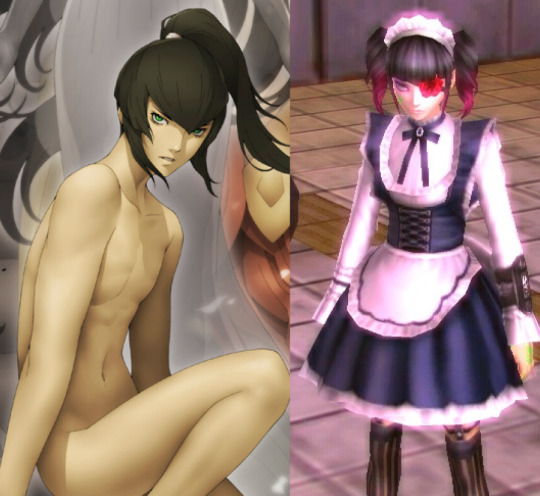
What if I tell you... there's more characterization than it appears to be?
The most consistent trait among Megaten protagonists is certainly their androgyny. Fastidious fans would accept nothing less than the most beautiful eyelashes someone could have the privilege of being born with as it became a long defined characteristic in Kaneko's art.
Considering the franchise debuted with a main character described as a guy that would look good in a skirt, it's no wonder Kaneko (and later, Doi) had to follow the feminine-looking boy legacy:

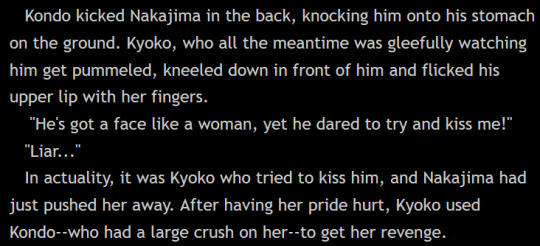


However, this aspect is not actually that commonly depicted as a self-aware trait in the games. Attractive? Sure. Wooing ladies? Almost always. Specifically having a spotlight on the feminine features, though? Hardly any would be at par with our originator Nakajima.
Which includes Flynn. That being said, even if it's not brought up in the story, Flynn's androgyny is still touched upon not only in his profile notes in the SMTIV Artbook...
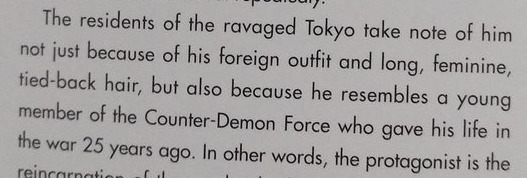

...but also in the way he's perceived in demon negotiations:
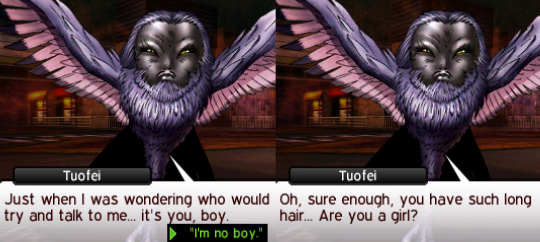
Excuse me!
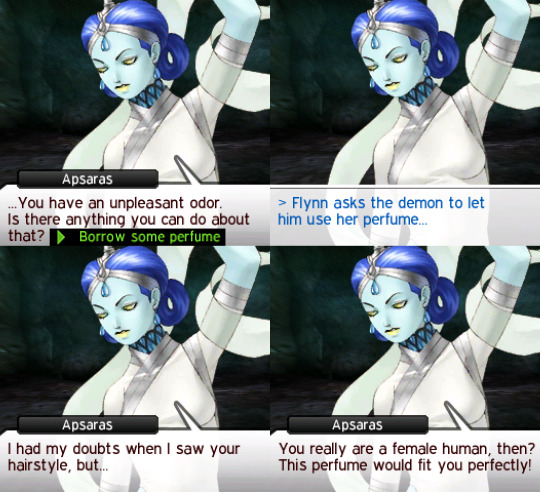
Going from a stinky swordsman to bestie <333 in a flash.

Lham Dearg having this dialogue when the motherfucker shares the same hair lenght as Flynn is some double standards BS.

And then Chagrin-chan gives you a Detox solution.
However, you also have a chance of becoming a target of gender rivalry for this same answer:

No good, Chagrin-chan.
And then you have the rather unusually neutral way Flynn looks at relics:
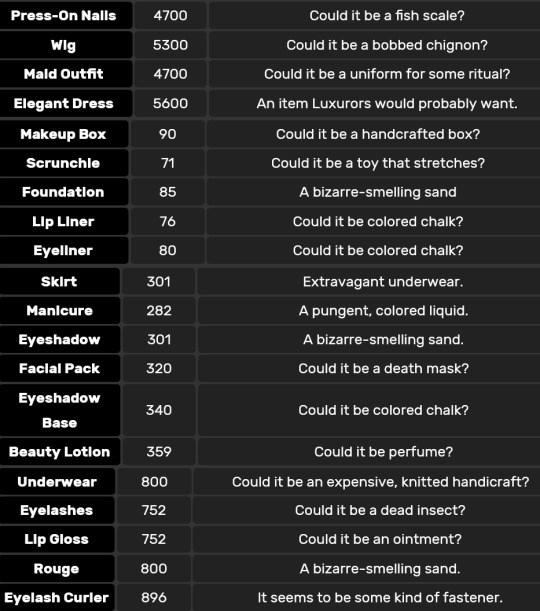
You could argue that it’s due to Flynn being a country bumpkin born in an artificial world currently in its medieval period hence even basic concepts that he would know of would be interpreted differently when seeing their modern versions.
On another note, we also have to recognize that the location with the most conservative worldview is Mikado.

And yet, it's Nanashi the one with very gender-specific commentary:
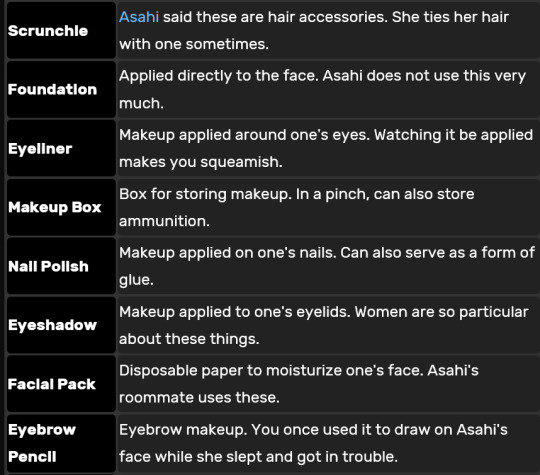
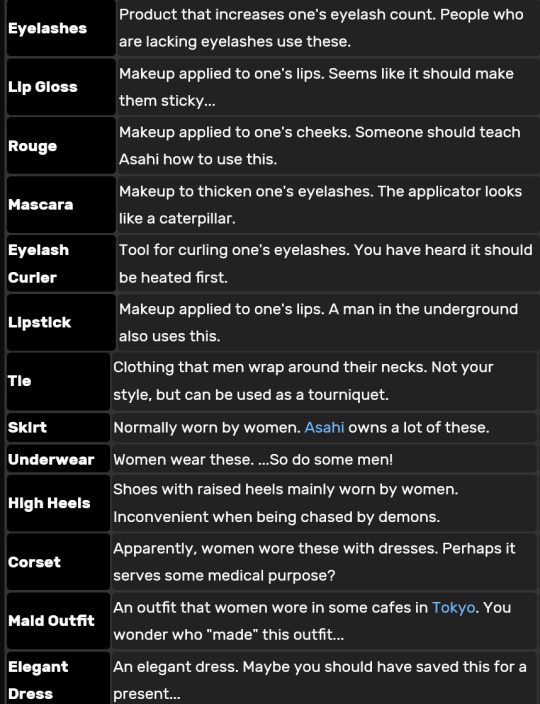
A feasible counterpoint perhaps would lie on the possibility that Flynn didn’t grow with many women around him, specially ones that would invest in their own appearance which would be difficult considering their peasant background.
And an indoctrinated one on top of that.
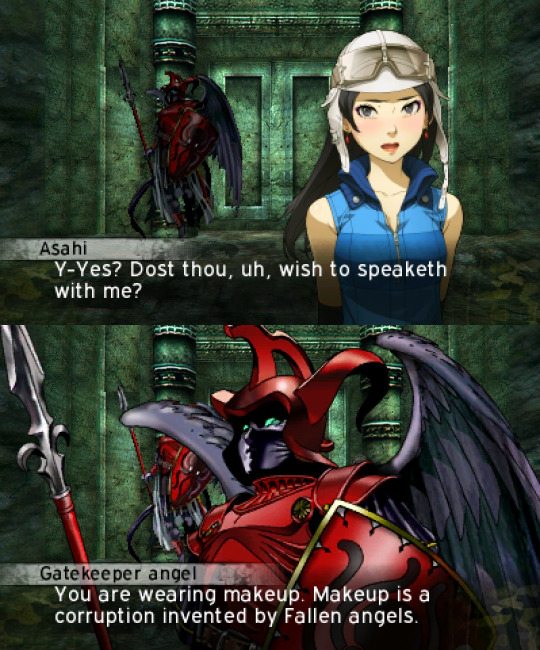
Which isn't to say that there isn't makeup culture in Mikado though, as shown by Isabeau and Gabby.

Regarding Isabeau, I commented before that her choice of fashion seems to be more adapted to her own self-expression rather than a default way of presenting for either Luxurors or Samurai women. At any case, it's still part of a larger issue.
In fact, Luxurors and even monks from the Monastery weren't shown to be as anti-Unclean extremists as the Divine representatives themselves.

In the myth, Gabriel is a messenger who was entrusted to deliver several important messages on God’s behalf. Therefore, as Gabby, Gabriel acts as a mediator and makes God's message understandable to people through adapting her appearance to reach the most hearts as possible.
In other words, we have the picture of peasants being fairly ignorant of new technology (with Flynn among them) and only having the bare essentials while the higher caste thrives over luxuries to the point that becomes normalized what would be considered slightly sinful.
So much that even the angels had to tolerate it to a certain level in order to become close to humans and manipulate them.
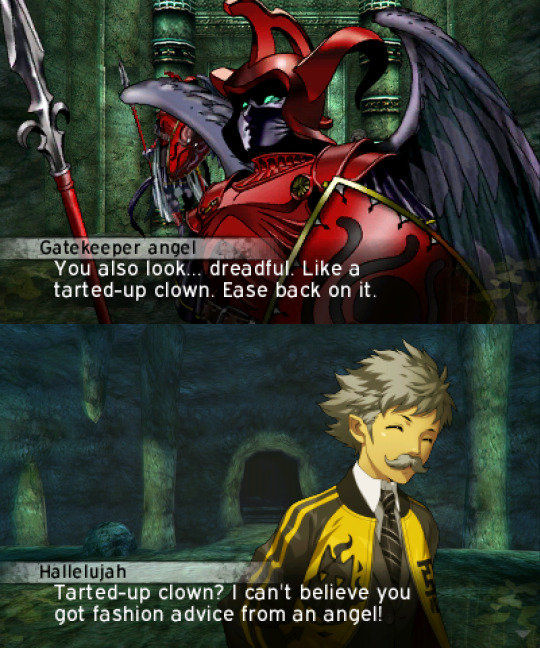
Nanashi, on the other hand, meets so many ladies worried about their appearance all over the underground that he somehow ended up knowing more than Asahi even.
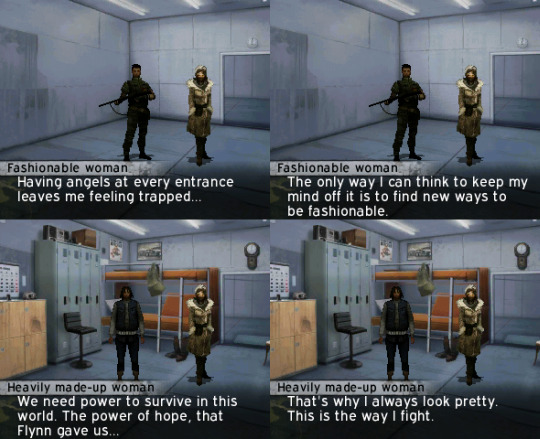
So essentially, Flynn "isn't familiar with female expression" but "effortlessly passes as a woman" regardless of what he's wearing while Nanashi "knows" and "plays around" with it like a costume.
And in both cases, it seemingly comes more "at the player's choice" rather than being done in an unsolicited way.
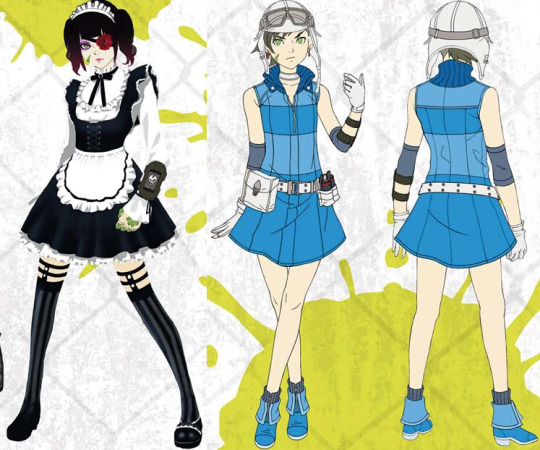


Doi's comments on SMTIVA's wardrobe convey that Nanashi is into wearing flashy clothes. Some fashionable, some dumb, some awfully absurd for anyone to wear in the middle of a war-like environment.
Nanashi basically wants to stand out. He fully knows he looks weird and is having a blast wearing flamboyant shit while fighting demons around Tokyo.
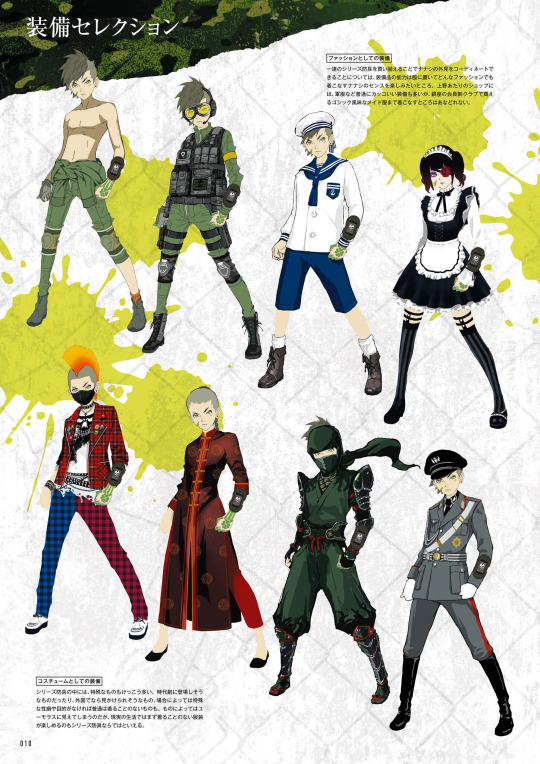
Meanwhile most of Flynn’s wardrobe are basically “gears that Flynn would consider useful for avoiding hazards while being ignorant of what the design means”.
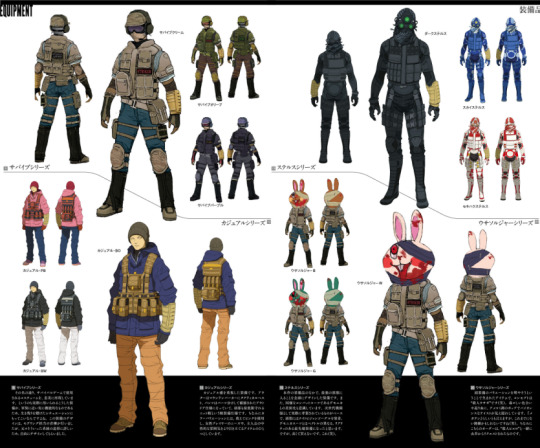
Nanashi does it for fashion while Flynn does it for protection. This is also applied to the situations where the player "can choose" to act feminine: Nanashi crossdresses and wears make up while Flynn lets demons believe he's a woman to get a positive reaction in negotiations.
To summarize, Flynn was intended to be seen as an individual with both male and feminine traits (or the lack of both in some aspects) beyond just the stylistic choice of his androgynous design. While Nanashi is aware of gender roles and his social standing as a guy but also breaks expectations according to his own will.
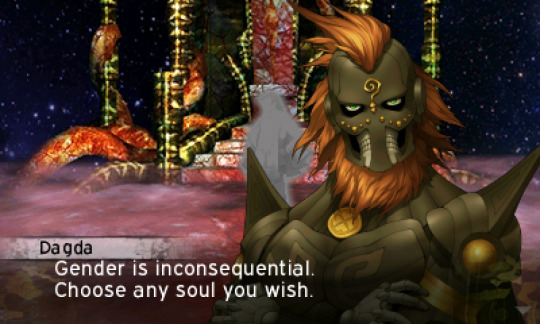
These qualities are coherent to the lore of the story while simultaneously working on a gameplay perspective, as those are ways to bring diverse options for the average player while making female players also feel 'included' even if the protagonist is a boy (as emphasized by Doi himself), which is, to this day, an unbreakable tradition in mainline games:


Somehow, it turns out that Nakajima's legacy comes in handy with a seemingly unisex-presenting main character that is able to fill the gaps of an audience.
On an ending note, while we have yet to see a more complete official breakdown of SMTV's art direction through interviews, one can understandably connect a similar reasoning for the design choices behind Nahobino.
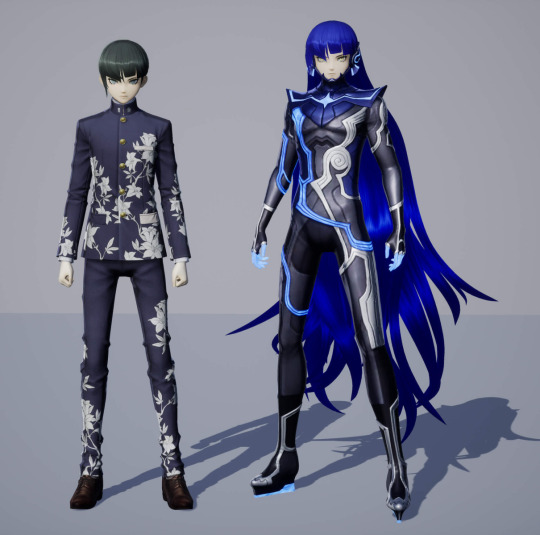
The fanbase of the series combined with Persona has a male-to-female ratio of 40:60, to which confirms the feminine-looking boys indeed reach a bigger female audience than male.
As interesting as it is, one can't help but wonder if we would ever actually reach the other side of the gender spectrum in an actual title. We have horny mods, so there's that at least.
36 notes
·
View notes
Note
Hello!! Found your blog while scouring the internet for Anything relating to Analog Squad, which I’ve binged today. Got any other Thai drama recs by any chance? I’ve already added Burnout Syndrome and Ready Set Love onto my watch list
analog squad mentionned, yessssss!!! hi hi :) do I have other thai drama recs???? hell yeah friend let's go, you loving analog squad AND adding burnout syndrome & ready set love to your watch list tells me you have great taste so let's go 💅

I told sunset about you: literally a masterpiece from beginning to end. if you liked the character exploration of analog squad, you'll love this one! very VERY dramatic but very VERY good. my fave!

not me: literally my fave show of all times, lives rent-free in my head, changed my mind, I made it my master's thesis topic, I'm beyond obsessed with it. by the same director & with the same pairing as burnout syndrome so I recommend watching that one first to see what you're getting into, this show is so special & different than any others. you'll love it!

project s: skate our souls: the 3rd show in my holy trinity. changed my life & my outlook on my own mental health, has great actors adjacent to the ones in analog squad & ready set love (google nadao bangkok & you'll get it), and it's just the most beautiful underrated gem of all time :)

project s: side by side: same overarching show as the previous one, this one is super bittersweet & will get you in your feels in an analog squad fashion. a banger imo.

the gifted: another banger, this one is more adjacent to ready set love in terms of scope & grandeur of the moving elements needed to make this show work. it's very different & very good!

sleepless society: insomnia: idk exactly why I feel like you'd like this show, but I feel liked you'd like this show. or perhaps I'm just recommending you all of my personal faves lol. anyways super underrated show that it straight up a banger & super different. I really recommend it.

theory of love: if you're signed up for burnout syndrome & you enjoyed I told sunset about you, you'll LOVE theory of love. same pairing as not me & burnout syndrome, toxic af, dramatic like itsay, will make you question your sanity at times... legit so good. this show has haters but it'll always have me as a fan. I think you'll love it!

the revenge: legit my roman empire. no one watched this show but it's some of the best shit I've ever seen! it has some of the soul of analog squad & the social criticism of ready set love, except this show is super fucked up lol. very very good, could not recommend it more!

3 will be free: queer, messy & has some social commentary, I feel like this show would please you if you liked analog squad & added ready set love & burnout syndrome to your watch list. it feels like a show completely different from these three, but also the perfect amalgamation of all three. a cultural reset imo!

midnight motel: this one is short, dark & fucking greatly executed! same main actor as burnout syndrome, not me & theory of love (and my fave actor in general) and a great social commentary. could not recommend it more!

happy birthday: I feel like happy birthday & analog squad occupy a similar space in my heart. it's bittersweet, heartwarming & a tear-jerker all at once, and it deals with an important topic. this one is so good, and has stayed with me since I watched it years ago.

great men academy: this one is maybe tonally most similar to ready set love, but I also want you to watch it for jaylerr, who was also in analog squad, and whom I love dearly. he's excellent in this role.

in family we trust: same thing as gma, this also has jaylerr & I am indeed trying to make you a jaylerr stan with this rec list lol. this is so good, mysterious, has good social commentary, amazing acting, & will keep you on your toes. on top of making you a jaylerr stan, of course.
xxx
#answers#rec list#thai dramas#I told sunset about you#not me#project s: sos#project s: side by side#the gifted#sleepless society: insomnia#theory of love#the revenge#3 will be free#midnight motel#happy birthday the series#great men academy#in family we trust#super sorry for the almost one month late response... a bitch has been BUSY
33 notes
·
View notes
Text



Raf Simons SS2002: A Turning Point in His Career
Raf Simons’ SS2002 collection marked a pivotal moment in his career. It was the collection that solidified his place in the fashion world and established him as one of the most influential designers of his generation. With minimalist silhouettes, punk influences, and a deep dive into youth rebellion, the collection was a bold reaction to the commercial fashion landscape of the time.
It was also the moment Simons began to see himself not just as a designer, but as an artist. The collection was a visual exploration of post-punk culture, blending his interest in youth subcultures and social commentary with sharp, daring lines. The impact was immediate—critics hailed it as groundbreaking, and Simons gained an even bigger following.
The SS2002 collection laid the foundation for what would come: his later work at Jil Sander, the rise of his own label, and his influence on fashion, art, and pop culture. It was the moment Raf Simons became more than a designer—he became an icon. follow on Instagram for more
51 notes
·
View notes
Text
11th House: Social Media Profiles
Aries in the 11th House: Your social media profiles may feature dynamic and energetic content, showcasing your bold endeavors and leadership qualities. You might be active in online communities, initiating discussions, and sharing your achievements and adventurous experiences. Extreme sports, motivational content, and leadership seminars. #AdventureSeeker #LeadershipGoals #GoGetter Prefers Twitter for its fast-paced interaction and sharing of quick updates, as well as Instagram for showcasing their bold adventures.
Taurus in the 11th House: Your social media presence may emphasize comfort and stability, reflecting your appreciation for the finer things in life. You may share content related to food, art, or nature, and you might engage in online groups that focus on practical advice and material well-being. Home decor, gardening tutorials, and gourmet cooking shows. #FoodieLife #ArtAppreciation #NatureLover Prefers Pinterest for its focus on aesthetically pleasing visuals and practical lifestyle inspiration, as well as Facebook for connecting with friends and sharing comforting content.
Gemini in the 11th House: Your social media profiles are likely to be versatile and engaging, reflecting your curiosity and intellectual pursuits. You may share a variety of content, including news, information, and social commentary, and you might actively participate in online discussions and forums. TED Talks, educational podcasts, and current affairs discussions. #CurrentEvents #IntellectualDebates #LifelongLearner Prefers Reddit for its diverse discussions and intellectual forums, as well as Twitter for engaging in various real-time conversations.
Cancer in the 11th House: Your social media presence may be nurturing and community-oriented, emphasizing connections and emotional support. You might share personal stories, family-related content, and nostalgic posts, and you may engage in online communities that foster a sense of belonging and mutual understanding. Family vlogs, DIY crafts, and emotional support groups. #FamilyFirst #CommunityLove #NostalgiaFeels Prefers Facebook for its emphasis on creating and nurturing online communities, as well as Instagram for sharing personal stories and connecting with others through visual content.
Leo in the 11th House: Your social media profiles may be vibrant and attention-grabbing, reflecting your creative flair and desire for recognition. You may share content that highlights your talents and achievements, and you might actively participate in online platforms that allow you to showcase your skills and leadership abilities. Fashion trends, celebrity news, and success stories of influential figures. #CreativeExpression #ShowcaseSuccess #InspirationalLeader Prefers Instagram for showcasing their creative endeavors and gaining attention, as well as YouTube for sharing their charismatic video content.
Virgo in the 11th House: Your social media presence may be informative and detail-oriented, focusing on practical advice and self-improvement. You might share content related to health, organization, and productivity, and you may participate in online groups that prioritize knowledge sharing and analytical discussions. Productivity tools, self-help articles, and health and wellness blogs. #ProductivityHacks #SelfImprovement #HealthyLiving Prefers LinkedIn for its focus on professional networking and career-related discussions, as well as Twitter for sharing practical tips and engaging in informative conversations.
Libra in the 11th House: Your social media profiles may emphasize harmony and diplomacy, reflecting your appreciation for beauty and balanced interactions. You may share content related to art, culture, and social causes, and you might actively engage in online communities that promote fairness, equality, and respectful dialogue. Art exhibitions, relationship advice columns, and social justice documentaries. #HarmonyAndBalance #ArtisticSoul #SocialJustice Prefers Instagram for its emphasis on visual aesthetics and maintaining harmonious social connections, as well as TikTok for creating and sharing balanced and entertaining content.
Scorpio in the 11th House: Your social media presence may be intense and thought-provoking, reflecting your passion and desire for depth. You may share content that delves into psychological insights, mysteries, and transformative experiences, and you might participate in online discussions that encourage profound self-reflection and exploration. Psychological thrillers, investigative documentaries, and esoteric knowledge. #DeepThoughts #MysteryUnveiled #InnerTransformation Prefers Tumblr for its introspective and thought-provoking content, as well as Twitter for engaging in discussions about deep and mysterious topics.
Sagittarius in the 11th House: Your social media profiles may be adventurous and optimistic, reflecting your love for exploration and philosophical discussions. You may share content related to travel, spirituality, and personal growth, and you might actively participate in online communities that foster open-mindedness and cultural exchange. Travel documentaries, philosophical discussions, and cultural festivals. #WanderlustSpirit #PhilosophyMatters #GlobalCitizen Prefers YouTube for sharing their adventurous travel vlogs and philosophical discussions, as well as Instagram for connecting with a global community and sharing inspiring content.
Capricorn in the 11th House: Your social media presence may be disciplined and goal-oriented, emphasizing your dedication to achieving success and recognition. You may share content related to career, achievements, and leadership, and you might participate in online platforms that focus on professional networking and strategic planning. Business news, financial planning guides, and career development webinars. #CareerDriven #SuccessMindset #ProfessionalGrowth Prefers LinkedIn for its focus on professional achievements and networking, as well as Twitter for engaging in discussions on career advancements and industry trends.
Aquarius in the 11th House: Your social media profiles may be unconventional and progressive, reflecting your passion for social change and innovation. You may share content related to humanitarian causes, technology, and unconventional ideas, and you might actively participate in online communities that promote collaboration and forward-thinking initiatives. Futuristic technology blogs, social activism movements, and scientific breakthroughs. #InnovationNation #SocialChange #FutureForward Prefers Twitter for its emphasis on sharing unique perspectives and engaging in social activism, as well as Reddit for participating in discussions about innovative and unconventional ideas.
Pisces in the 11th House: Your social media presence may be compassionate and imaginative, reflecting your empathy and artistic sensibilities. You may share content that inspires creativity, spirituality, and emotional connection, and you might engage in online groups that prioritize empathy, support, and creative expression. Spiritual retreats, music therapy sessions, and artistic expression workshops. #CreativeSoul #EmpatheticHeart #SpiritualAwakening Prefers Instagram for its focus on artistic expression and sharing compassionate messages, as well as Pinterest for gathering inspirational and creative content.
#astrology social media#astrology 11th house#astrology internet presence#astrology#11th house in the signs#11th house in signs#11th house
376 notes
·
View notes
Text

"A night on the village"
Basket is woven from red and yellow cedar bark
Lisa Telford, American, born in 1957 is a weaver who creates contemporary garments, shoes and other objects using Northwest Coast style weaving techniques. Her work serves as a commentary on Native identity, stereotypes and fashion.
Born in Ketchikan Alaska, Telford is a Gawa Git’ans Git’anee Haida Weaver and comes from a long line of weavers including her grandmother, mother, aunt, cousins, and daughter. She learned the traditional techniques of Haida basketry from her mentor Delores Churchill, and Haida cedar garments thanks to Holly Churchill. She began weaving in 1992, and for twelve years closely followed the tradition that form must follow function. It wasn’t until a friend asked her to submit a contemporary basket for a show that Lisa experimented beyond the borders of traditional form. This opened a door for her, and in 2004 she was asked to design a contemporary cedar-clothing piece for a show. She used traditional methods and materials, but felt more confident and inspired to experiment – creating a contemporary clothing item from cedar.
With her National Artist Fellowship from Native Arts and Cultures Foundation, Lisa collaborated with Preston Singletary (Tlingit), known for his glass art. Preston has developed techniques to mimic the woven texture of basketry, paying homage to the geometric border designs of traditional Northwest Coast baskets. Lisa worked with Preston in his Seattle, Wash. based hot glass studio learning the hands-on skills of working with glass, how to incorporate designs and shapes, and experimenting with forms such as dress figures, working collaboratively as a designer with Preston. They hope to create some new and compelling pieces, joining their expertise from their respective disciplines.
118 notes
·
View notes
Text
We Like, Are Totally Spies
When we think about shows that will appeal to boys. Action is the easiest to relate. Something like; Ben 10, American Dragon Jake Long, Avatar: The Last Airbender, and Justice League will be on the list. It has drama, it has fights and it's cool!
However, there has been a movement in that era where specific cartoon shows aim to get girls into action. Kim Possible, Juniper Lee, My Life as a Teenage Robot, and The Winx Club are perfect examples of such shows.
There is an odd case for more girl-centric shows. Something about the need to balance femininity with action. The show needs to feel like an action that happens to have the main characters be girls. This is where today's topic comes in. We're talking about how;
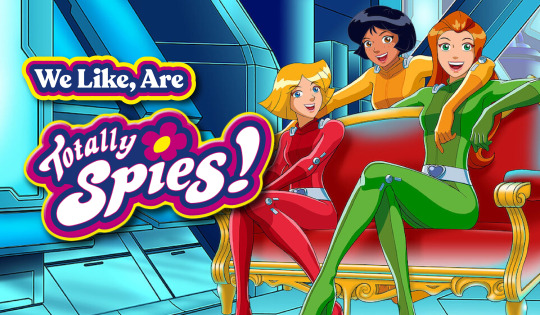
- How's the Mission, Spies? -
< Totally Spies > by Vincent Chalvon-Demersay and David Michel follows three teens; Sam, Clover and Alex from Beverly Hills living a secret life being Super Spies for WOOHP (World Organization Of Human Protection) under their boss; Jerry Lewis.
Their missions involve travelling the world. Fighting mad scientists and twisted outcasts who seek to dominate the world with style and gadgets that conceal themselves as fashionable equipment.

The trio plays specific archetypes. Sam (green) is the brains, Clover (red) is the fashionista/ boy obsessive and Alex (yellow) is the athlete and occasional nerd. Despite their differences, they share several common interests such as their love for shopping and spy skills of agility, hand-to-hand combat and espionage.
Across six seasons, the girls matured from high school to university students. Confronting the daily struggles of homework, social lives and their petty arch-enemy, Mandy.
As a vibe, < Totally Spies > fully leans into the Beverly Hills lifestyle of fabulous fashion and some familiar pop culture names of that era. The show has a mix of the James Bond type of super spy world filled with dull henchmen, high-tech machines and some tacky villains.
- Time to go to Plan B! -
The episodes are condensed into their own episode. Although there have been some arcs that follow specific villains who have a bit of history with the main characters.

Tim Scam is a former agent who went rogue against WOOHP and Terrence Lewis; twin brother to Jerry and a sore thumb to WOOHP. There also reoccurring allies as well. Brittney (cyan) who joined the team as a trainee, Dean from the three-part series < Evil Promotion Much? > and Blaine a freelance agent who dated Clover.
The conflicts, if we can even call them conflicts at all have aged rather strangely. Some of the villains commit petty crimes like kidnapping celebrities due to jealousy or act extreme. Like being anti-consumerist with the solution of destroying malls.
Yet, some are still relatable to this day such as a kid villain who is mad at his father for being busy as a commentary on how parental neglect can cause warped ideas in a child. Whatever, it's a pre-teen show. Let's not look into it too deeply.
The world of Totally Spies is also interconnected with several other shows; [The Amazing Spiez] and [Martin Mystery].

< Martin Mystery > follows Martin, a paranormal investigator for the Center with Martin's step-sister, Diana Lombard and Java the Caveman. Fighting monsters, urban legends and aliens.
According to a special crossover episode. Martin's boss; M.O.M (Mystery Organization Manager) and Jerry know each other. Likewise, in Amazing Spiez; Jerry is also the boss of the Clark siblings. Lee, Marc, Megan and Tony. Sadly, these shows were short-lived and cancelled.

It does raise an interesting point. Why is Totally Spies more popular? As a guess, I think it's because the chemistry between the characters is a lot more interesting and fun.
The three girls are best of friends and while they sometimes bicker over boys, responsibilities and opinions. They will always put their friendship and mission first above all else. It feels more real, in a superficial way.
That an actual girl would have a girlfriend group this tight-knit and if they ever become a part of something bigger than them. They would do it together.

- Here We Go Again! -
Tacky villains, cute super spy girlfriends and awesome gadgets aside. The show has a few good jokes here and there. Its art style borrows a lot from Anime and its colors are groovy to the eyes.
For a show that was meant to attract girls into action. The show has also garnered a large following from boys as well. I think another secret to the success of < Totally Spies > can also be because of its approach to the subject. Like I said in my introduction.
There is an odd case for more girl-centric shows. Something about the need to balance femininity with action. The show needs to feel like an action that happens to have the main characters be girls.

This show is a girl's show. The girls are unapologetic being girly. Doing girl things like shopping, manicure, dating and going on dream vacations but with their secret life as spies. The show balances it out with good action and is still using that girly theme to add to its gadgets.
Heck, some of the gadgets are stuff that I would personally want to have. The Jet Pack backpack, The Wind Tunnel 3000 Tornado Blast Hair Dryer, Lazer lipstick and the Compowder are on my list. Especially with its costume change function.
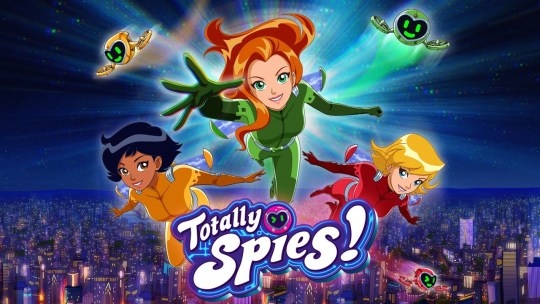
It's a show that embraces both ends of the spectrum and allows it to show its respective strengths rather than shy away from the themes. With the announcement that this show is going to have a season 7/ soft reboot. It does look promising with several concerns.
But I am hopeful that for a beloved show such as this. The girls will have a proper return and inspire a new generation of girls (and boys) to be < Totally Spies >


#totally spies#samantha simpson#Clover Ewing#Alexandra Casoy#jerry lewis#martin mystery#diana lombard#java the caveman#M.O.M#the amazing spiez#spiez nouvelle generation#spies#super spies#tim scam#Britney#Brittney Akiwara#sam#clover#alex#WOOHP#world organization of human protection#marathon media#Blaine#dean
49 notes
·
View notes